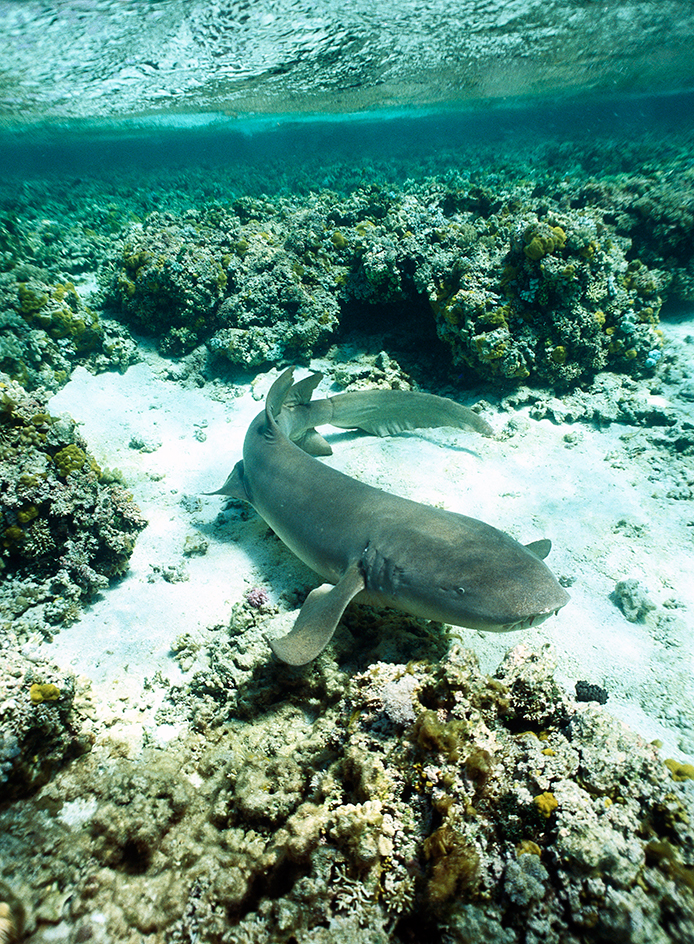Nurse shark is a bottom-dwelling shark that lives in shallow coastal waters. The nurse shark is tan to dark brown. It hunts at night for food on the sea floor.

The nurse shark has a broad head with a small mouth. It has barbels (fleshy whiskerlike growths) around the mouth. The shark uses these barbels to detect prey by touch in the dark. The shark’s long tail fin makes up about a quarter of its overall length. The nurse shark typically reaches about 8 1/2 feet (2.6 meters) long. It usually weighs about 250 pounds (110 kilograms).
The nurse shark lives in warm waters along the Atlantic and Pacific coasts of North and South America. It also is found around islands in the Caribbean Sea. The shark also lives along the Atlantic coast of Africa and a small part of Europe. It usually swims near coral reefs.
The nurse shark feeds on fish. In addition, it eats crabs, shrimp, and other crustaceans (animals with a shell and jointed legs). It also eats squid, octopuses, and other mollusks (boneless animals that often have an outer shell). The shark’s mouth can produce powerful suction. It typically sucks in prey from holes in the reef.
Females give birth to live young that they carry for about six months. They give birth to about 30 pups over several weeks. Nurse sharks may live for more than 25 years in captivity.
Nurse sharks bite people only rarely, usually when harassed. The shark may hold onto a person so strongly that it cannot be removed without using tools. If given a clear path of escape, however, the shark will usually release its bite and swim away. People sometimes call the sand tiger shark the gray nurse shark. But it is not closely related to the true nurse shark.
